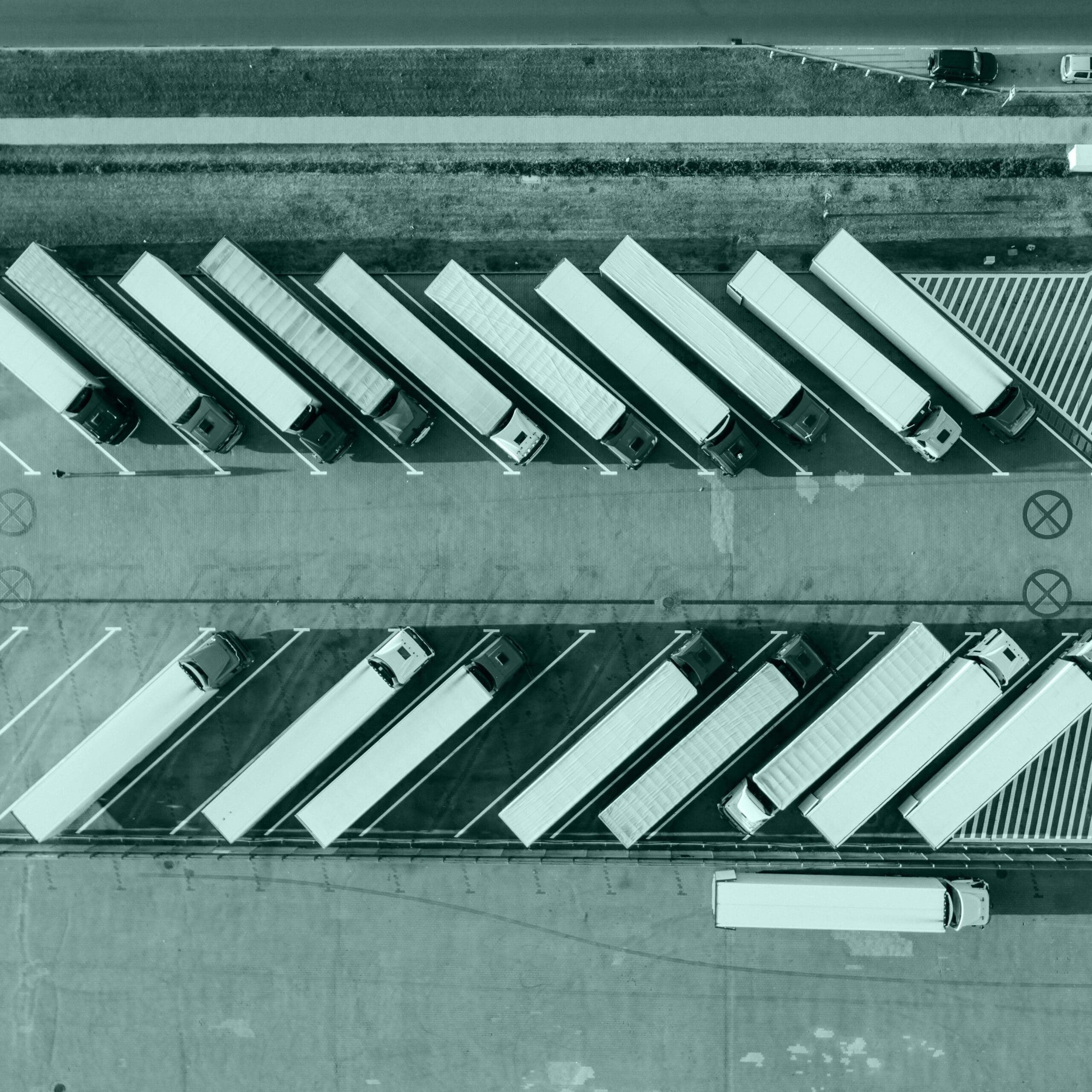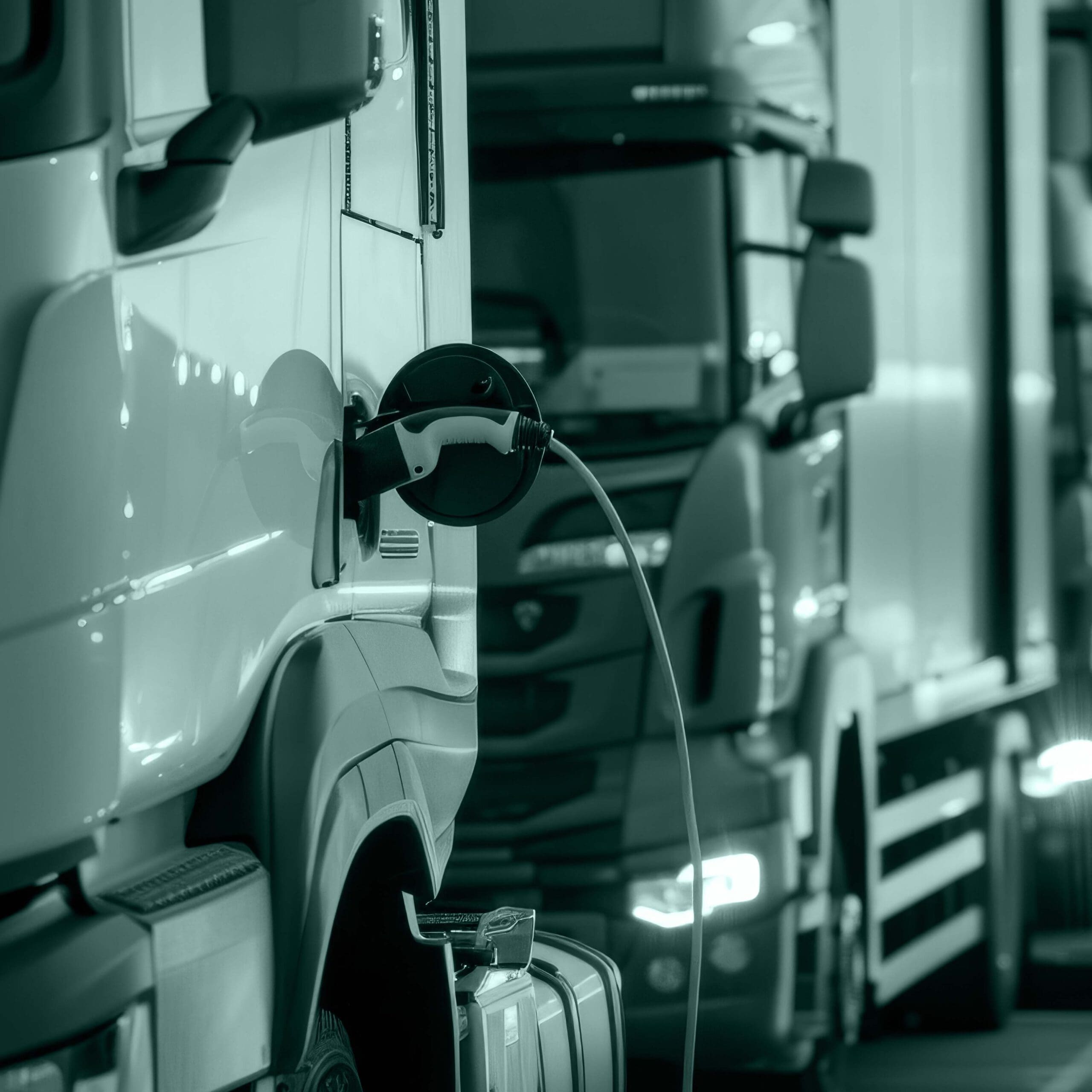The Solution
Volvo and Daimler must lead the shift to electric trucks
The world must urgently replace diesel trucks to stop their devastating impact on health and climate. The solution is here: accelerate the shift to electric trucks. The industry needs a full-scale transition—and it must be done right. As top truck makers, Volvo and Daimler have the resources, power, and responsibility to lead. They must ensure the transition protects workers, respects human rights, and prioritizes sustainable supply chains. Is it hard? Yes. Is it urgent? Absolutely. Can it be done? Only if they have the will to act.
Starting today, Volvo and Daimler must:

01
Accelerate to 100% new zero-emissions truck sales by 2040 worldwide
- Sales: Commit to 100% new zero-emissions truck sales by 2035 in leading markets, and 2040 worldwide, including interim year milestones.
- Investments: Back up your commitments with the investments necessary to scale production and bring down prices of zero-emissions trucks in all markets, and disclose your annual progress.
- Push for, no push back: Advocate for most effective policies—supply-side regulations—that will drive industry-wide transformation and market certainty. And refrain from any efforts to roll back policies.
What is a just transition?
A worldwide transition to electric that involves all affected parties— workers, pollution-impacted communities, small & medium operators, drivers, Indigenous Peoples and other supply chain-affected communities—and responds to former and potential injustices, in order to protect human rights, land and environment as we pivot and develop new systems for a clean truck future.
“A just transition to clean energy must centre on three core principles: Shared prosperity, Human rights and social protection and Fair Negotiations”
Business & Human Rights Resource Center
What is a zero-emissions truck and why do we focus on electric as the solution?
Zero-emissions medium or heavy-duty trucks means a truck without an internal combustion engine. Battery electric is the only technology available today which can cut emissions from new sales quickly, fully decarbonize the sector in the long-term, and eliminate harmful air pollution. Additionally, battery electric technology is rapidly advancing its viability across all trucking use cases and reducing its cost.
There is potentially a role for hydrogen fuel cell trucks using green hydrogen, however its potential role in the transition is increasingly shrinking [X]Liebrich, ITF, particularly given its high cost, low efficiency, most deployments expected post-2030, and when merit order for green hydrogen is considered.[X]Transport & Environment
Why are we setting these years for the transition?
These years are aligned with the Global Memorandum of Understanding on Zero-Emission Medium- and Heavy-Duty Vehicles (Global MOU), signed on by 33 nations: 100% zero-emission sales in 2040 and 30% by 2030 to reach net zero emissions by 2050. They are based on projections of the necessary zero-emissions truck sales necessary to achieve global climate goals.[X]Global Drive to Zero.

02
Advance a zero-emissions truck industry that works for all
- Pollution-impacted communities and drivers: Prioritize electric sales and charging infrastructure investments where there is highly concentrated truck pollution and the potential for significant and immediate health benefits.
- Small operators: Create products and financial services to ensure affordable, accessible, and transparently priced zero-emissions trucks.
- Workers: Respect workers’ rights, including the right to join a union, and retain and retrain workers for well-paid, zero-emissions jobs.
- Supply chain: Engage in fair negotiations with supply chain stakeholders and rights-holders, including local communities and Indigenous Peoples’, to ensure their rights and lands are respected.
What are the places most affected by truck pollution?
- 89% of Europeans living in cities are considered to be breathing dangerous levels of Nitrogen Dioxide (NO₂), and 97% of them are breathing dangerous levels of PM2.5.
- In the U.S.A., researchers have detected increases in air pollution in communities where new warehouses have opened… there is a spike in annual NO₂ of nearly 20% associated with warehouses.
- Low-income neighborhoods and communities of color experience an average of 28 percent more NO₂ pollution than higher-income and majority-white neighborhoods.
- In Low and Middle income countries, air pollution levels are particularly high where economies tend to rely more heavily on polluting industries and technologies like older trucks.
- In G20 countries, heavy-duty vehicles’ exhaust accounted for 86% of on-road diesel nitrogen oxides (NOx) emissions in 2015.
What do fair negotiations look like?
Communities and workers need guarantees that negotiations will be fair throughout operational life-cycles and when accessing remediation for harm. There will be inclusive community consultation and robust implementation of the principles of Free, Prior, and Informed Consent (FPIC) for Indigenous Peoples; and guarantees that workers, Indigenous and community leaders will not be silenced through intimidation or violence.[X]Business and Human Rights Resource Cente
What are rights-holders?
Under the Universal Declaration of Human Rights, all human beings are rights-holders and in particular contexts, there are often specific social groups whose human rights are not fully realized, respected or protected, and have particular entitlements. These groups often include women/girls, ethnic minorities, Indigenous Peoples, migrants and youth. [X]United Nations

03
Foster the infrastructure and ecosystem needed to scale
- Charging infrastructure: Develop, invest in, and support initiatives and policies to deploy charging infrastructure and grid upgrades.
- Clean energy: invest in and advocate for the development and use of renewable energy for charging and manufacturing that is built based on just transition principles.
- Supply chain: Invest in and advocate for sustainable and fossil-free sourcing and circularity.
What are just transition principles?
According the Business and Human Rights Resource Center, a just transition to clean energy must center on three core principles: Shared prosperity, Human rights and social protection and Fair Negotiations.
What is sustainable and fossil-free sourcing?
Like automotive manufacturers, truck manufacturers are major buyers of emissions-intensive and polluting metals and minerals, including steel, aluminum, and the growing battery industry. To achieve global climate goals and avoid repeating harmful business-as-usual practices, the heavy industries in truck makers supply chains need to be reformed in parallel:
- Equitable, respecting and advancing human rights
- Sustainable, preserving the environment and reducing primary resource demand
- Fossil-free, a fossil-free supply chain
What constitutes a circular economy?
A circular economy is where materials are reused, repurposed, or recycled at a high quality, instead of continually relying on materials obtained through mining. Circularity is often focused on recycling end-of-life EV batteries to create new batteries, but it applies to all other materials used in truck manufacturing; in particular, resource and emissions intensive materials that truck manufacturers use in significant volumes, such as steel and aluminum.[X]European Union
Benefits of electric trucks
Electric trucks with managed charging operate at approximately 63% lower cost per mile during everyday use compared to diesel trucks.[X]Multiple studies (NACFE 2022; ATRI 2023; NREL 2022; ICCT 2023) estimate electric truck operating costs at ~$0.26/mile vs. ~$0.70/mile for diesel—around 63% savings.
The electric truck market is projected to grow 18.3% annually, reaching $320 billion by 2035.[X] Carbontracker
Battery electric trucks produce 63% fewer lifetime emissions than diesel when charged with fossil electricity and up to 84% lower with renewable electricity.[X]ICTT